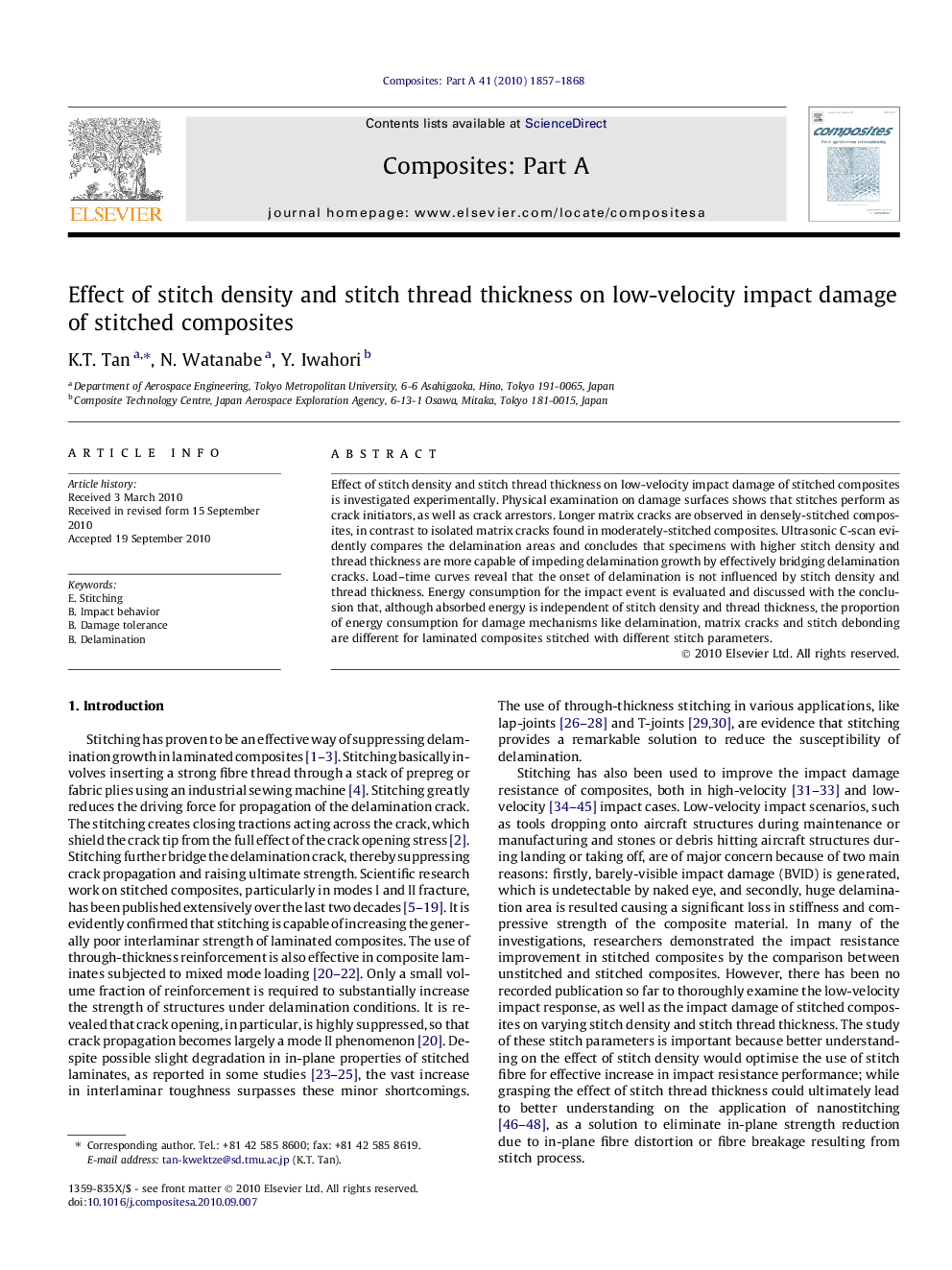| Article ID | Journal | Published Year | Pages | File Type |
|---|---|---|---|---|
| 1466949 | Composites Part A: Applied Science and Manufacturing | 2010 | 12 Pages |
Effect of stitch density and stitch thread thickness on low-velocity impact damage of stitched composites is investigated experimentally. Physical examination on damage surfaces shows that stitches perform as crack initiators, as well as crack arrestors. Longer matrix cracks are observed in densely-stitched composites, in contrast to isolated matrix cracks found in moderately-stitched composites. Ultrasonic C-scan evidently compares the delamination areas and concludes that specimens with higher stitch density and thread thickness are more capable of impeding delamination growth by effectively bridging delamination cracks. Load–time curves reveal that the onset of delamination is not influenced by stitch density and thread thickness. Energy consumption for the impact event is evaluated and discussed with the conclusion that, although absorbed energy is independent of stitch density and thread thickness, the proportion of energy consumption for damage mechanisms like delamination, matrix cracks and stitch debonding are different for laminated composites stitched with different stitch parameters.
